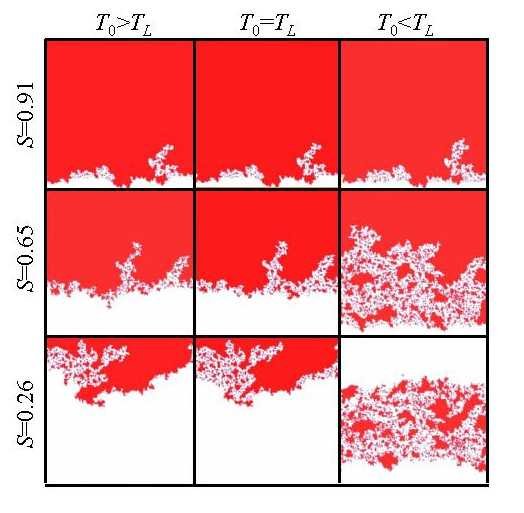

Figure 1 The influence of temperature gradients on the drying process when gravity is of little importance. For three different temperature gradients (from left to right: T0> TL, T0= TL and T0< TL the water distributions at three different saturation stages (from top to bottom: S=0.91, 0.65 and 0.26) are shown. The open side (x=0) of the system is always at the bottom.
When T0< TL the
movement
of the front is inhibited and dry patches develop after a certain
time
at the closed side. When T0> TL
the front movement is enhanced and the air ingress in the wet
region
behind
the front is inhibited. The corresponding drying curves are shown
in
figure
2.

Figure 2 – The drying curves (saturation S versus time t) of systems with different temperature gradients: T0> TL, T0= TL and T0< TL. The initial parts of the curves are also plotted in the insert, but now the time is rescaled with the equilibrium vapour density at the open side of the system.
The behaviour of 3D systems differs from that of 2D systems,
because
the point where air percolates the system and the point where the
water
network breaks up in isolated clusters do not coincide. Before the
latter
fragmentation point the temperature will mainly influence the
drying
rates.
After this point also the water distribution becomes sensitive to
the
temperature
profile.
H.P. Huinink, L. Pel, M.A.J. Michels, M. Prat; Drying Processes
in
the
presence of temperature gradients - Pore-scale Modelling; Eur.
Phys.
J.
E 9, 487-498 (2002).